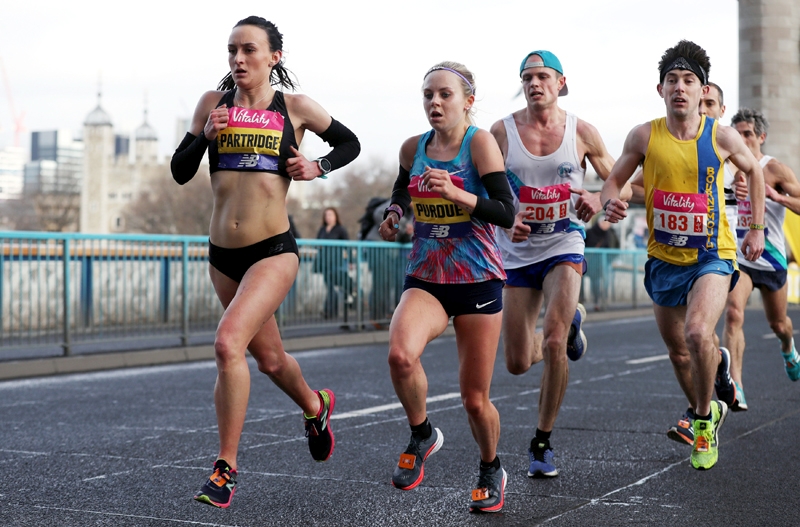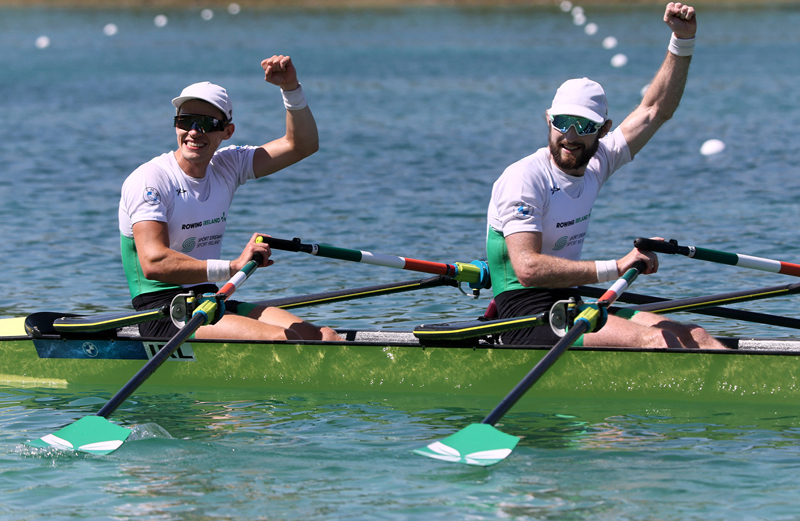You are viewing 1 of your 1 free articles. For unlimited access take a risk-free trial
Training program prescription: one size does not fit all!

Which types of training sessions will work best for maximizing fitness? New research suggests that the answer might all depend on your individuality…
Every human is unique. It sounds obvious enough but it’s surprising how often this self-evident truth can be forgotten when designing training programs for athletes. It’s not just variations in the way that different athletes perceive or enjoy the same training program. Research has established that our physiological responses to the same training stimulus can vary greatly.To illustrate this biochemical individuality in athletes, a pioneering study on ten sets of identical twins in 1984 found considerable individual differences in the training response to a short-term endurance training program(1). This is surprising because genetically, identical twins are extremely similar, with only tiny differences arising in their genotypes during the nurturing process. Since innate muscle biochemistry is largely determined by genotype, you would have expected responses to an identical training program to be nearly identical!
Later studies confirmed that large differences do indeed exist in the way athletes respond to a training stimulus. For example, several studies found that athletes attained very similar adaptations in performance and physiological parameters after training schedules involving markedly different exercise volumes and intensities(2,3). More recently, other studies have demonstrated large inter-individual variability in training responses after athletes undertook the same moderate-intensity continuous training and high intensity interval training (HIIT) programs(4,5).
Individual responses in recreational athletes
Much of the research carried out into inter-individual responses to training has focused on accomplished or elite athletes, most of whom were younger and engaged in competition at the time. But how does individuality in training responses affect recreational and older athletes? And how do these translate into actual performance in an event such as a half marathon race? To date, there’s been little data to answer these questions, but a new study by Portuguese and Spanish scientists provides an excellent insight(6).The research
In this study, the researchers investigated the variation in individual responses to two half-marathon 12-week training programs, which differed both in the total running volume and intensity they provided. The 20 subjects were moderately fit, female recreational runners, averaging 40 years of age. At the start of the study, the runners were divided into two groups: moderate-intensity continuous (MICT) or high-intensity interval (HIIT) training. Both training programs lasted for 12 weeks and consisted of three sessions per week (spaced apart), from September to December, after which all the women participated in the same half-marathon race held in Vilanova ila Geltrú (Spain), located at sea level on the Mediterranean coast. The programs consisted of the following:- Moderate intensity continuous (MICT) - this group followed a training program consisting of two days of continuous running (40mins and 60mins) and one day that when the session alternated between long-distance running (from 12 km to 25 km) and 800-meter intervals every week (run in approximately 4 minutes). The total distance trained in the 12 weeks was approximately 383 km and the overall time invested, calculated as an average among all the participants, was 40 hours and 30 minutes.
- High-intensity intervals (HIIT) - this group participated in a weekly training program that was designed to reduce training volume and increase training intensity. The program consisted of a first session of long-distance running (from 8km to 16km), a second day dedicated to interval running ( a series of 200m and 400m efforts), and a third day that alternated between an uphill run and a fast run with bodyweight resistance exercises. The total distance trained by the HIIT group was approximately 301kms and the overall time invested, calculated as an average among all the participants, was 33 hours and 26 minutes. Thus, the women in the HIIT program covered 21% less distance and invested 17% less time than those in the MICT group.
The findings
The main findings were as follows:- The MICT group showed on average a 2.9% reduction in finishing times; runners took on average 3mins 50secs less to complete the half-marathon compared to previous times. The range of responses to the continuous training were variable; three subjects were high responders with a mean time reduction of 15 minutes, four subjects were normal responders achieving a mean decrease in their finishing time of 2 minutes 26 seconds and three subjects were non-responders, increasing their mean previous finishing time by 5 minutes and 31 seconds.
- The HIIT group showed a smaller reduction finishing times of 1.8% on average, which meant that it took them 2 minutes 34 seconds less to complete the half-marathon compared to their previous finishing times. However, this group was more much more polarised in terms of responses; five subjects were responders, with an average time reductions of 7 minutes 54 seconds compared to the mean of their previous finishing times, while the other five were non-responders, increasing their mean previous finishing time by 3 minutes 37 seconds (see figure 1A).
- When the training groups were analyzed separately, measures of maximum aerobic capacity (VO2max) did not show significant differences before and after the training program in the MICT group, while there was a significant decrease of 7.2% was observed in the HIIT group, along with much greater variability in VO2max after the training program in the HIIT group (suggesting athletes responded well while others responded poorly.
Figure 1: Individual percentage changes before and after the training program

(A) - percentage changes in time comparing previous (before) finishing times and the finishing times. (B) - percentage changes in VO2max before and after the training programs. (C) - percentage changes in time to exhaustion (TTE) obtained in a field maximal incremental test before and after the training programs.
Conclusion and practical implications
This study provides yet more evidence that how an athlete responds to a training program is not determined just by that program, but also by his/her biochemical individuality. This is highlighted by the fact that there were responders and non-responders in both training groups, even though the participants followed a standardized and supervised endurance training program with prescribed intensities based on their percentage of VO2max.Another point worth making is that the HIIT program resulted in a distinct cluster of athletes who responded well and another who didn’t. Although the numbers of athletes in the study were small, this finding was significant. What this means in practice is that some athletes who switch away from continuous steady-state endurance training to HIIT as a means of improving performance (quite a fashionable recommendation) may well be disappointed with the results, and even experience a decline in performance.
In terms of practical recommendations, what does this mean? Unfortunately, there’s no way of knowing whether an athlete will likely be a good or poor responder to a particular mode of training such as HIIT. This means that some kind of monitoring is recommended. Rather than slogging on endlessly with a program and hoping for the best on race/competition day, monthly performance testing should be considered (eg a flat out time trial over a set distance, or maximum average power output for a time duration not too dissimilar to event duration). No gains or even a performance decline will likely indicate that program is not working for you.
Some studies have recommended that athletes standardize exercise intensity in a program using other measures related to performance power output, such as blood lactate – and NOT percentage of VO2max or heart rate. This is because blood lactate responses obtained after prolonged endurance exercise at given percentages of VO2max can vary greatly from person to person, especially in older athletes(7). In plain English and using an example, working at 85% of maximum heart rate on the assumption it correlates closely with lactate threshold (where you will spend a lot of time during a race) may be useless because your lactate threshold may be well over 90% of max heart rate, and you will therefore not be generating the training stimulus you require.
A better solution for athletes therefore is to set training intensity based on lactate thresholds. Fortunately this doesn’t require invasive equipment; research shows that self-monitoring ventilation and breathing rates provides a surprisingly accurate approximation to the first and second lactate threshold levels – see this article for a full explanation and practical advice.
A final point to make about how to know whether a training mode will be effective is to look at what training mode(s) works well among very successful athletes. When we do this, we find one structure that is supported by a large body of evidence in endurance sport is a ‘polarized’ structure. In a polarized approach, athletes spend the bulk of their training volume working at low-moderate intensities, well below the first lactate threshold (also known as ‘zone 1’). This is supplemented some training at very high intensities (at or above 2nd LT), with relatively small volumes conducted at 1st LT or between 1st and 2nd LT – zone 2). For a comprehensive discussion and guide to polarized training structure, see this article.
References
- Med. Sci. Sports Exerc. 1984; 16, 489–493
- J. Physiol. 2008; 586, 151–160. doi: 10.1113/jphysiol.2007.142109
- PLoS One 2014; 9:e98119. doi: 10.1371/journal.pone.0098119
- Appl. Physiol. Nutr. Metab. 2016; 41, 229–234.
- J. Aging Phys. Act. 2018; 26, 655–670
- Front. Physiol. 2020;11:579835. doi: 10.3389/fphys.2020.579835. eCollection 2020
- Front. Physiol. 2016; 7:613. doi: 10.3389/fphys.2016.00613
Related Files
Newsletter Sign Up
Testimonials
Dr. Alexandra Fandetti-Robin, Back & Body Chiropractic
Elspeth Cowell MSCh DpodM SRCh HCPC reg
William Hunter, Nuffield Health
Newsletter Sign Up
Coaches Testimonials
Dr. Alexandra Fandetti-Robin, Back & Body Chiropractic
Elspeth Cowell MSCh DpodM SRCh HCPC reg
William Hunter, Nuffield Health
Keep up with latest sports science research and apply it to maximize performance
Today you have the chance to join a group of athletes, and sports coaches/trainers who all have something special in common...
They use the latest research to improve performance for themselves and their clients - both athletes and sports teams - with help from global specialists in the fields of sports science, sports medicine and sports psychology.
They do this by reading Sports Performance Bulletin, an easy-to-digest but serious-minded journal dedicated to high performance sports. SPB offers a wealth of information and insight into the latest research, in an easily-accessible and understood format, along with a wealth of practical recommendations.
*includes 3 coaching manuals
Get Inspired
All the latest techniques and approaches
Sports Performance Bulletin helps dedicated endurance athletes improve their performance. Sense-checking the latest sports science research, and sourcing evidence and case studies to support findings, Sports Performance Bulletin turns proven insights into easily digestible practical advice. Supporting athletes, coaches and professionals who wish to ensure their guidance and programmes are kept right up to date and based on credible science.













